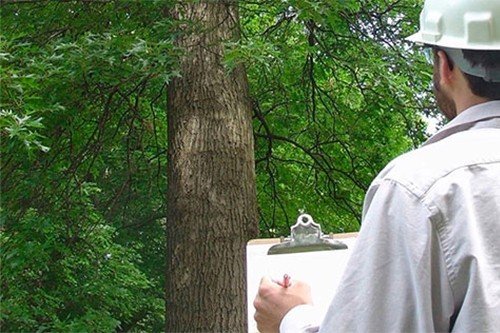Introduction to European Active Projects
When you hear the phrase European Active Projects, you’re essentially looking at the lifeblood of European progress. These projects are large-scale initiatives funded and managed by the European Union (EU) along with national governments, research institutions, and private partners. They aim to tackle some of the biggest challenges Europe faces today—ranging from climate change and digital transformation to research innovation, infrastructure growth, and educational collaboration.
European active projects fundamentally aim to bring about meaningful, lasting, and sustainable change throughout the member countries. They not only drive economic development but also ensure that Europe stays competitive in a fast-changing global landscape.
Key Categories of European Active Projects
The EU runs hundreds of initiatives at any given time. To make sense of them, it helps to break them down into major categories.
Research and Innovation Projects
At the core of the EU’s strategy are research and innovation. The Horizon Europe programme, one of the largest in the world, funds cutting-edge projects in areas like medicine, renewable energy, and artificial intelligence. The Marie Skłodowska-Curie Actions is another initiative that helps researchers and encourages cooperation between different countries.
“Innovation is the cornerstone of Europe’s competitiveness,” states the European Commission in its Horizon Europe overview.
Environmental and Climate Projects
The LIFE Programme is one of the most prominent European active projects addressing sustainability. It supports nature conservation, biodiversity, and the circular economy. Beyond that, the European Green Deal initiatives aim to make Europe climate-neutral by 2050. Projects under this umbrella focus on renewable energy, emissions reduction, and green infrastructure.
Digital Transformation Projects
Europe is also investing heavily in digitalization. Projects under the Digital Europe Programme focus on artificial intelligence, cybersecurity, data infrastructure, and building smart cities that leverage technology to improve citizens’ daily lives.
For example, smart grid projects across countries like Germany and Spain are already reducing energy waste and improving efficiency.
Infrastructure and Connectivity Projects
Infrastructure projects are vital for connecting people and businesses. The Trans-European Transport Network (TEN-T) aims to modernize Europe’s railways, airports, and roads. Similarly, energy interconnection projects strengthen cross-border energy supply, ensuring security and sustainability.
Social and Educational Projects
Not all projects are about technology or infrastructure. Some, like Erasmus+, focus on people. Erasmus+ has given millions of students, teachers, and young workers the chance to study, train, and volunteer abroad. It’s a cornerstone of European cultural and educational cooperation.
Funding and Support for European Active Projects
Funding is the backbone of these projects. The EU has set up multiple financing channels to ensure broad participation:
- Horizon Europe: €95.5 billion allocated (2021–2027)
- Cohesion Fund: Supporting infrastructure and environment projects in less developed regions
- Erasmus+: €26.2 billion budgeted (2021–2027)
- Digital Europe Programme: €7.5 billion investment
Table: Major EU Funding Programmes
| Programme | Focus Area | Budget (2021–2027) |
| Horizon Europe | Research & Innovation | €95.5 billion |
| Erasmus+ | Education & Mobility | €26.2 billion |
| LIFE Programme | Environment & Climate Action | €5.4 billion |
| Digital Europe | Digital Transformation | €7.5 billion |
| Cohesion Fund | Infrastructure & Sustainability | €42.5 billion |
Case Studies of Successful European Active Projects
Let’s look at how theory turns into impact.
Horizon Europe: Medical Research Breakthroughs
One Horizon Europe project supported the development of mRNA vaccines, which proved crucial during the COVID-19 pandemic. This illustrates how EU-funded research can have global effects.
Erasmus: Transforming Student Mobility
Since its creation, Erasmus+ has enabled over 12 million Europeans to study, train, or volunteer abroad. A French student might spend a semester in Spain, gaining not only academic credits but also cultural and language skills.
Smart City Projects
The GrowSmarter program united cities such as Cologne, Stockholm, and Barcelona to explore eco-friendly urban solutions. From energy-efficient buildings to electric mobility, these projects reduce carbon footprints while improving quality of life.
Cross-Border Transport Networks
The Rail Baltica project aims to connect Estonia, Latvia, and Lithuania with a high-speed railway to improve trade and travel. This €5.8 billion initiative is one of the most ambitious infrastructure projects in Europe.
Benefits of European Active Projects
These projects aren’t just about headlines. They deliver real benefits:
- Economic Growth & Jobs: Tens of thousands of new jobs created yearly.
- Sustainability: Investments in renewable energy reduce dependency on fossil fuels.
- Connectivity: Improved transport and digital infrastructure bring regions closer.
- Education & Research: Students, workers, and researchers gain life-changing opportunities.
Challenges Facing European Active Projects
Of course, it’s not always smooth sailing.
- Bureaucracy: Applying for funding can be lengthy and complex.
- Collaboration Hurdles: Coordinating across 27 member states isn’t easy.
- Political Uncertainty: Brexit showed how quickly things can shift.
- Impact Measurement: It may take several years to evaluate long-term outcomes.
Future of European Active Projects
The next decade looks promising for European initiatives. Key focus areas include:
- Horizon Europe 2025+: More emphasis on health, digital, and climate research.
- European Green Deal: Targeting climate neutrality by 2050.
- Digital Europe Programme: Increasing capabilities in AI, cloud technology, and cybersecurity.
- Resilience and Recovery: Projects focused on pandemic recovery and future crises.
How to Get Involved in European Active Projects
Whether you’re a business owner, researcher, NGO, or student, opportunities abound:
- Visit the EU Funding & Tenders Portal
- Explore Erasmus+ for study and training options
- Partner with universities or research institutes for Horizon Europe calls
- Join cross-border consortiums for infrastructure or environmental initiatives
Conclusion
European Active Projects are more than just policy—they’re practical solutions shaping Europe’s present and future. From funding world-class research to connecting countries with railways and supporting students abroad, these initiatives touch millions of lives. They are Europe’s way of tackling shared challenges together, ensuring that innovation, sustainability, and unity remain at the core of development.
If you’re a student, entrepreneur, researcher, or policymaker, getting involved could open doors to new opportunities and make you part of Europe’s transformation journey.













Leave a Reply